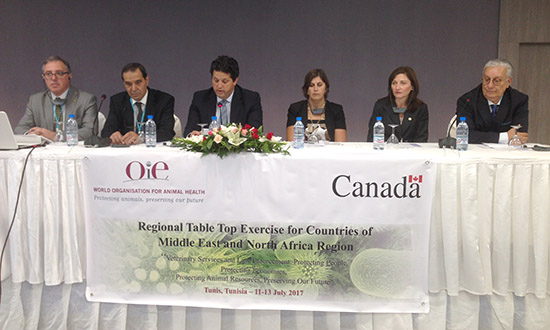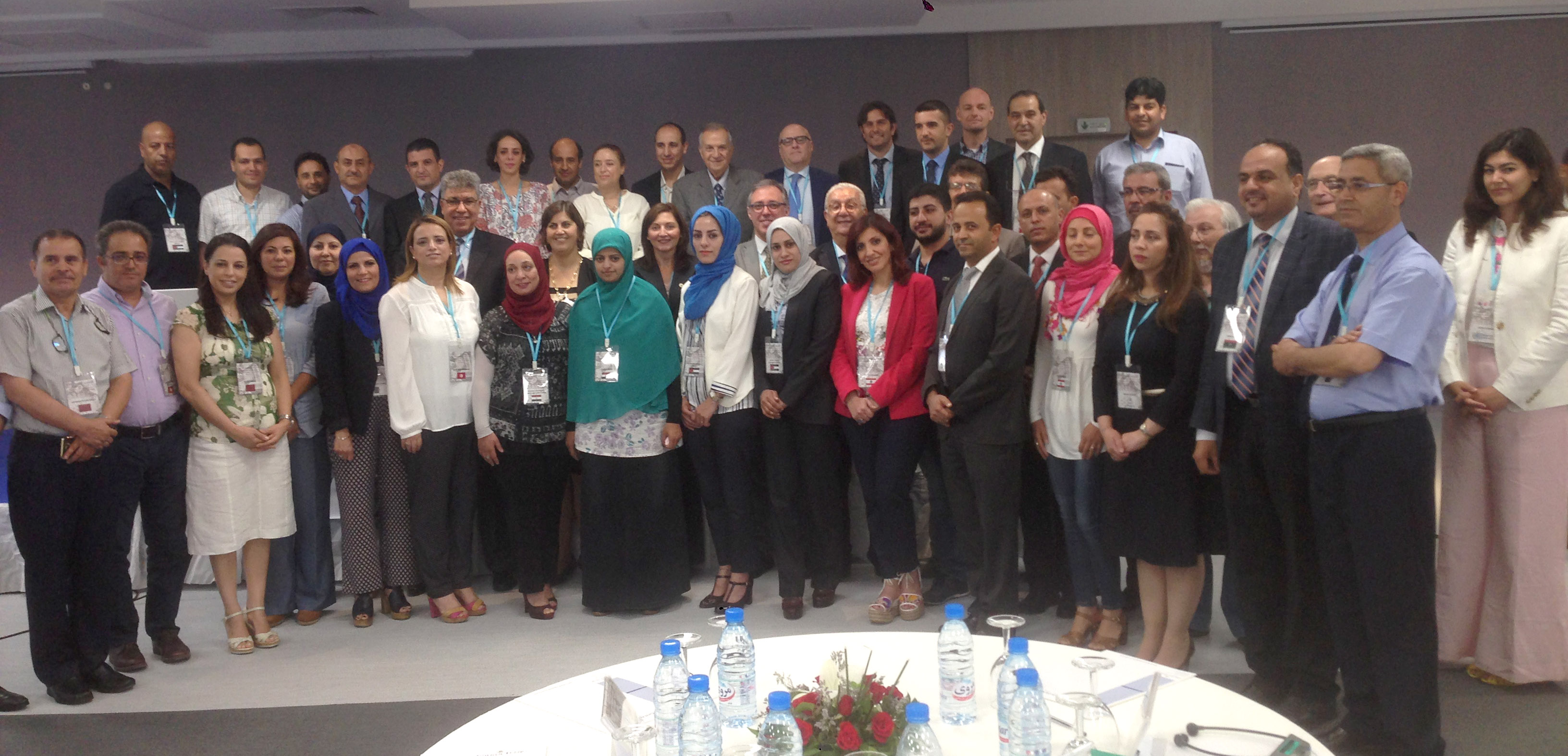Within the framework of the OIE’s strategy for bio-threat reduction and in support of the recommendations of the first Global Conference on Biological Threat Reduction (2015), the OIE convened on July 11-13 in Tunis (Tunisia) a table top exercise in the context of capacity building activities, with the objective to build bridges between animal health and law enforcement sectors. As a matter of fact, an effective response to an intentional release of a pathogen requires cooperative and coordinated action to be taken by both sectors. It is relatively uncommon for law enforcers and veterinarians to work together in their day to day activities, thus proactive engagement is required to build mutual understanding, trust, respect and cooperation.
The overall objectives of this workshop were:
The organisations involved in this Global Partnership Programme are: OIE, INTERPOL, UNICRI, WHO, FAO, IZSAM Teramo and CIRAD.
Representatives of both sectors, animal health and law enforcement, from countries of North Africa (Algeria, Libya, Mauritania, Morocco, Tunisia) and Middle East (Egypt, Iraq, Jordan, Lebanon) attended this workshop. Unfortunately, representatives of Saudi Arabia and Syria could not be present in Tunis.
The workshop was officially opened by the State Secretary in charge of agricultural production at the Ministry of Agriculture, Water Resources and Fisheries of Tunisia, Mr Omar El Behi, along with the Ambassador of Canada in Tunisia, Mrs Carol McQueen, Dr Mariano Ramos representative of the OIE Headquarters based in Paris (France) and Mrs Rebecca Hoile, Head of Bioterrorism Prevention Unit at INTERPOL Headquarters based in Lyon (France).
Also present for the official opening ceremony: the Chief Veterinary Officer of Tunisia, Dr Malek Zrelli and the OIE Sub-Regional Representative for North Africa, Dr Rachid Bouguedour. The workshop was driven and animated by Dr Mariano Ramos (OIE) and Mrs Rebecca Hoile (INTERPOL).The workshop was also facilitated by experts from CIRAD, FAO, OIE Collaborating Centre IZSAM of Teramo (Istituto Zooprofilattico Sperimentale dell’Abruzzo e del Molise “Giuseppe Caporale”), UNICRI and WHO.
Examples of biological or chemical attacks were highlighted by the representative of INTERPOL, Mrs Rebecca Hoile. She described the term of agroterrorism as a subset of bioterrorism, defined as the deliberate introduction of animal or plant pests with the goal of generating fear, causing economic damage, and/or undermining social stability.
She also stressed the following characteristics:
Through table-top exercises during interactive working group sessions, the different aspects of the surveillance, the link between animal health and law enforcement sectors and their collaborative work, the implementation of a common framework on security, the preparedness and response, the biosecurity, the communication, the capacity building, were discussed. One scenario was about the intentional release of a pathogen, the Rinderpest Virus, which is only stored in laboratories since the disease has been eradicated.
Major recommendations of the workshop:
This workshop showed a high level of interactivity between both sectors of animal health and law enforcement which should be involved in biothreat management in the near future
All pictures © J. Mérot (oie) 2017.
All pictures © J. Mérot (oie) 2017.

